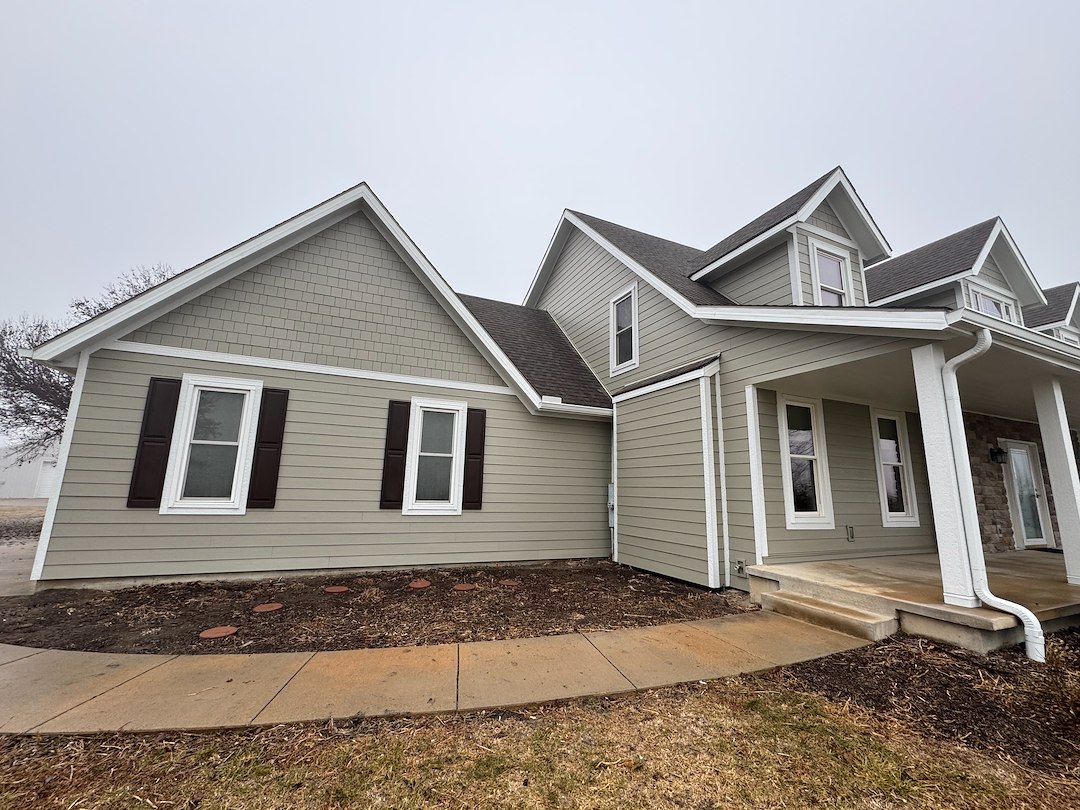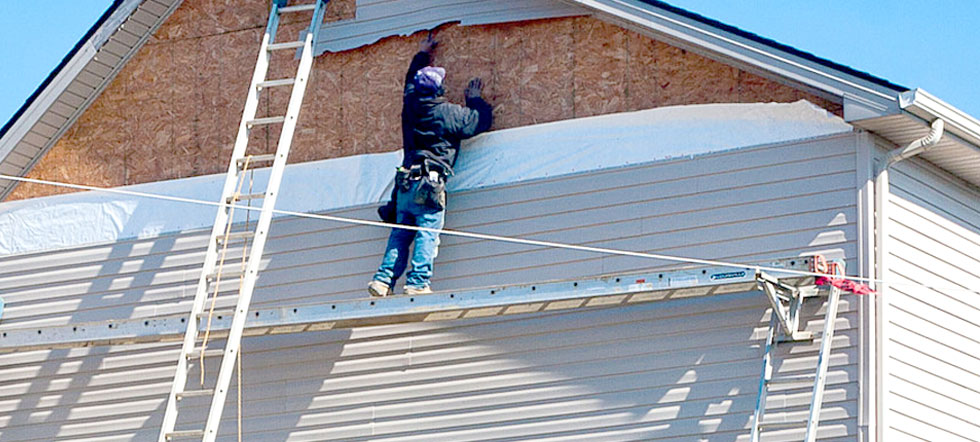Your Go-To Morris Siding Contractor for All Residential Siding Needs
Your Go-To Morris Siding Contractor for All Residential Siding Needs
Blog Article
The Crucial Guide to the Numerous Kinds Of House Siding and Their Distinct Advantages
In the realm of home enhancement, selecting the best house siding is a vital choice that impacts both visual appeal and practical efficiency. The variety of products readily available, such as wood, plastic, fiber metal, block, and concrete, each offer one-of-a-kind benefits that cater to different requirements and choices. Understanding these distinctions can significantly enhance the long life and worth of a residential property - morris siding contractor. With so many options to consider, which exterior siding product truly stands out for your certain project? Discovering these choices can result in educated decisions that align with both style and functionality.
Wood Exterior Siding
Wood house siding, a preferred option for property exteriors, provides an ageless aesthetic that combines all-natural appeal with architectural stability. This home siding material is available in numerous designs, consisting of clapboard, roof shingles, and board-and-batten, enabling house owners to personalize their façade to match their design preferences. Timber exterior siding is usually crafted from durable varieties such as cedar, redwood, or want, which are understood for their durability and capability to stand up to ecological stressors.
One of the key benefits of timber house siding is its excellent insulation buildings, which can contribute to energy performance and lower home heating costs. Furthermore, wood home siding is biodegradable, making it an eco-friendly choice when sourced sustainably. Normal maintenance, consisting of paint or staining, can extend its life-span and enhance its look, permitting property owners to protect the all-natural charm of the wood.
Nonetheless, potential disadvantages consist of susceptibility to bugs, rot, and climate damage, requiring appropriate therapy and maintenance - morris siding contractor. Despite these worries, when properly cared for, wood home siding can provide a sturdy and stunning remedy that improves the personality of a home while providing a warm, welcoming ambience

Vinyl Siding
Plastic exterior siding has actually emerged as a leading selection for house owners looking for a low-maintenance exterior alternative that integrates sturdiness and price. This flexible product is crafted from polyvinyl chloride (PVC), making it resistant to numerous weather, including dampness and UV rays. Because of this, plastic siding does not warp, rot, or discolor, ensuring resilient visual charm.
Among the primary benefits of plastic siding is its considerable series of styles and shades, allowing house owners to achieve the preferred appearance for their residential property without the need for regular repainting. In addition, plastic siding is simple to mount, which can considerably minimize labor prices during building or improvement projects.
Plastic house siding also contributes to power effectiveness. Many options feature insulation backing, which improves thermal performance, assisting to preserve comfy interior temperature levels and possibly reducing power expenses. Furthermore, its smooth surface helps with easy cleaning, requiring only periodic washing with a yard hose to remove dirt and debris.
Fiber Cement Exterior Siding
Fiber cement exterior siding has gotten grip among house owners and builders alike as a result of its remarkable mix of sturdiness and aesthetic versatility. Composed of a mixture of cement, sand, and cellulose fibers, this click to read more home siding option is crafted to hold up against severe weather condition conditions, consisting of high winds, heavy rain, and temperature level changes, making it a long-lasting selection for property exteriors.
Among the primary advantages of fiber cement house siding is its resistance to bugs, such as termites, and its non-combustible nature, offering enhanced fire safety and security. morris siding contractor. Additionally, it is readily available in a broad selection of colors, designs, and textures, allowing home owners to accomplish their wanted aesthetic without giving up performance
Another benefit is its reduced maintenance demands; fiber concrete siding normally calls for painting or staining every 5-10 years, which is less frequent than other products. In addition, its longevity contributes to a lower general price of possession, as it reduces the need for regular fixings or substitutes.
Ultimately, fiber cement house siding represents an excellent investment for those seeking a resilient, attractive, and versatile outside alternative, combining both form and feature to boost the home's aesthetic charm.
Steel Exterior Siding
The appeal of metal exterior siding lies in its robust toughness and contemporary visual charm, making it a preferred choice for contemporary style. Offered in materials such as aluminum and steel, metal house siding provides a range of colors and surfaces, permitting property owners to achieve a personalized appearance that matches their style vision.

Energy efficiency is another significant advantage, as numerous metal exterior siding products are developed with insulation options that help regulate indoor temperature levels. This can lead to lowered energy costs over time. visit this web-site Additionally, steel house siding is usually recyclable, making it an eco-friendly choice for sustainability-minded homeowners.
The installation procedure for steel exterior siding can be relatively straightforward, causing a quicker turn-around time for building jobs. In general, steel house siding integrates functionality and design, making it a functional choice for those seeking a aesthetically attractive and long-lasting outside finish.
Block and Stone Siding
Block and stone house siding sticks out as a timeless selection that improves the visual appeal of any home. Recognized for their toughness and low upkeep, these materials give a phenomenal return on financial investment while elevating the property's visual appeal. Offered in numerous colors, appearances, and patterns, brick and rock can be additional hints tailored to suit diverse building designs, from traditional to contemporary.
One of the primary advantages of block and rock siding is their energy performance. Both products possess natural protecting homes that assist manage indoor temperatures, potentially minimizing home heating and air conditioning costs. Additionally, they use premium fire resistance compared to other exterior siding choices, adding to boosted safety.
One more advantage is their long life. Block and stone can last for decades, typically calling for minimal upkeep past periodic cleansing. Unlike timber siding, they are impervious to insects and rot, making sure a resilient outside that holds up against the elements.
Conclusion
In recap, the choice of exterior siding considerably impacts a home's visual charm, energy performance, and upkeep demands. Each type of siding-- whether timber, plastic, fiber brick, steel, or concrete and stone-- supplies distinct advantages tailored to different property owner choices and environmental conditions.
One of the key benefits of wood siding is its superb insulation residential or commercial properties, which can add to energy effectiveness and reduced heating prices. Additionally, timber siding is naturally degradable, making it an environmentally pleasant option when sourced sustainably.One of the key benefits of steel exterior siding is its resistance to numerous ecological aspects.Energy performance is another considerable benefit, as numerous steel siding items are made with insulation options that assist manage indoor temperatures. Each kind of siding-- whether wood, vinyl, fiber brick, steel, or concrete and stone-- uses one-of-a-kind advantages tailored to different home owner preferences and environmental problems.
Report this page